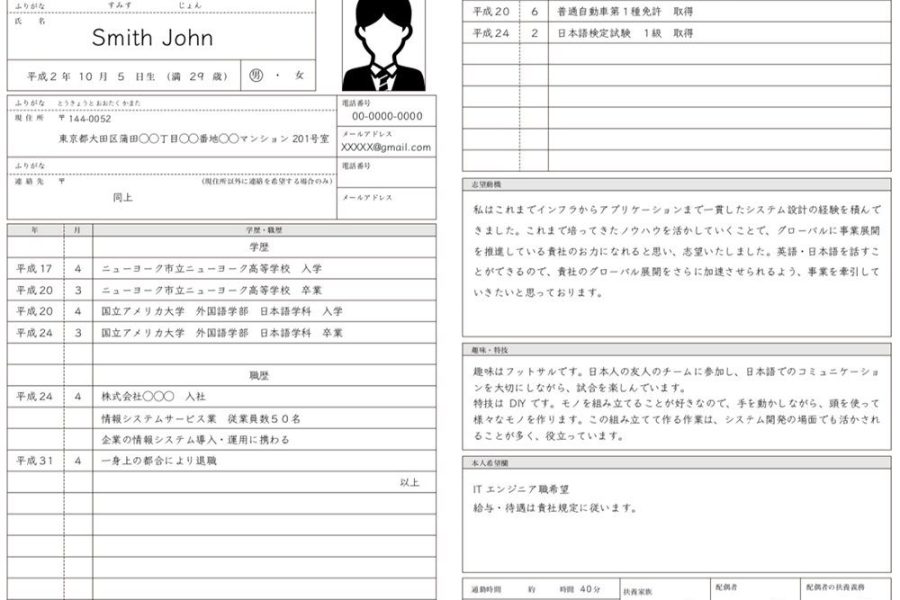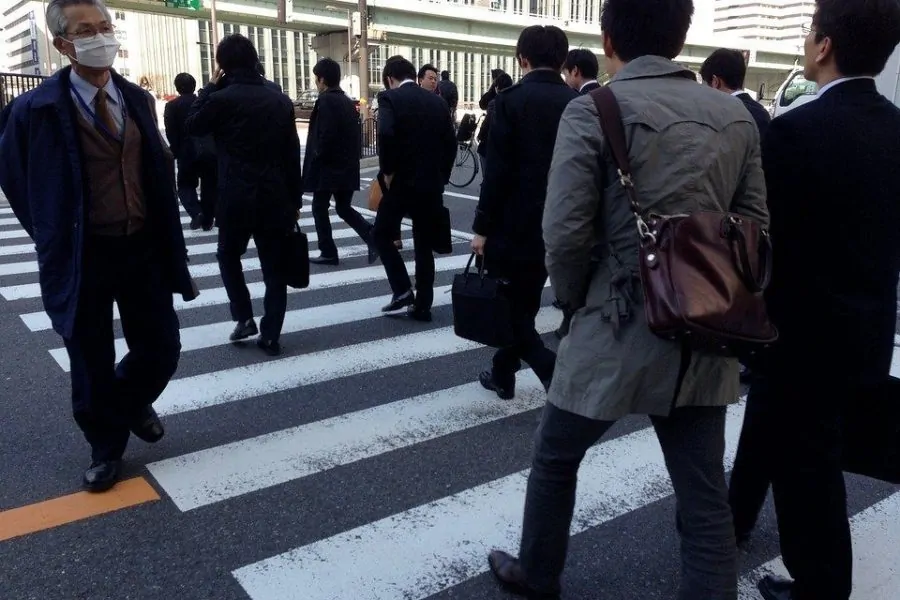If there is one thing the Japanese don’t joke around with, it is business manners… Being early rather than on time, following a strict work dress code, and using honorific language when addressing superiors are all essential aspects of the business rules when working at a Japanese company.
Business card etiquette is another thing you want to be aware of when doing business in Japan. This will help you avoid embarrassing situations and make a good impression on your Japanese business partners.
This article will discuss the business card culture in Japan, how to exchange business cards, and things to avoid when giving or receiving them.
Business Card Culture in Japan
In Japan, business cards are not simply a way of exchanging contact information. They are also used as an introduction to convey important information about an individual’s business rank and title. For this reason, business cards are treated with great care and respect.
Usually, a Japanese business card includes basic information about its owners, such as their full name, company name, position, department, and means of contact (phone number, e-mail address, and company’s postal address). All Japanese businessmen and women are expected to carry their ¨meishi¨ (business card in Japanese) on them, no matter if they are freelancers or simple office workers.
When meeting with a Japanese business partner for the first time, they will likely offer their business card to you before exchanging any pleasantries. This means the first impression you give the other person will change significantly depending on how you handle the exchange. So let’s go on and take a look at the proper way of exchanging business cards in Japan.
How to Exchange Business Cards
There are four main steps to follow when exchanging a business card with someone in Japan. Try to keep them in mind, and you will be alright.
1 – Preparations
Before you even meet your business partner or partners, there are some things you need to make the Japanese business card exchange go smoothly.
First, get a business card holder if you don’t already have one, and make sure you have plenty of cards in stock. Then store your cardholder somewhere you can easily access it (briefcase, inner pocket of your suit). Avoid storing it in the back pocket of your trouser.
If you plan on exchanging business cards during a meeting, try to know how many people will be present from the other company’s side and what their positions are.
2 – Giving your business card
There are several possible scenarios depending on how many people are present and where the exchange process takes place :
- When meeting only one person, the one coming to visit the other should give his or her card first.
- If there is more than one person from the same company, give your business card to the person who seems to be the highest in the hierarchy first (the highest-ranking person), then to the other partners. If you are unsure who is in charge, pay attention to who comes forward first. It will most likely be the one with the most authority.
- If you have a meeting between your team and several people from outside your company, the members with the highest position from each side will first exchange their cards. Then you should offer your card to the leader and the other partners.
Once you know who to address first, it’s time to introduce yourself. This is a widespread practice in Japan to start saying your name and company and then hand over the business card. A simple self-introduction in Japanese would be :
(your company) no (your name) to môshimasu. Dôzo yoroshiku onegai itashimasu.
My name is (your name) from (your company). It’s nice to meet you.
Note that you should :
- Be standing during the exchange
- Place your business card above your card holder with the writing facing your partner
- Present your card with both hands (while still holding your cardholder under it) and bow slightly
3 – Receiving someone’s business card
The process to follow when someone approaches with his or her card according to the business card etiquette in Japan is:
- Receive it with both hands
- Hold the edges so that the letters are not hidden
- Have a brief look at it, then say ¨chôdai itashimasu¨ (literally ¨I will receive it¨ ) as thanks
Sometimes when there are many exchanges a once, you and your business partner might rush things and try to hand over your card to each other at the same time, thus leading to some hesitancy as to how to proceed.
In this case, you can give your card with your right hand and receive your partner’s card with your left. As soon as your right hand is free, hold the card with both hands to look at it.
4 – Storing the received cards
Exchanging cards is crucial; you also need to know how to handle the cards given to you properly. When the exchange is meant to be short, carefully store the received cards in your cardholder once you are about to part with your business partners.
If a meeting follows the exchange:
- Place the card or cards you just received in front of you on the table. If you only received one card, place your business card case on the table and put the card above it.
- In case you received two or more business cards, place the card of the person in charge on your cardholder and place the remaining ones beside it directly on the table.
- A clever thing to do is to align the cards in the same order as your partners are seated so you can easily associate each name with the right person.
- Once the meeting is over, and your partners start to put away their cards, you can also do the same
6 Things to Avoid at All Costs
Although Japanese people tend to be more lenient towards foreigners, this is no excuse for committing mistakes. Below are six things NOT to do when exchanging business cards in Japan.
1 – Running out of business cards
This is probably one of the worst things you can do when doing business in Japan. As we mentioned, business card exchange is critical in Japanese business culture, and not having one will make you look unprepared.
When running low on business cards, ensure enough business cards before your next meeting. If you run out of cards after multiple exchanges, apologize and give your name and position orally. Once the meeting is over, send your business card by e-mail to the people who didn’t receive it and replenish your stock immediately.
2 – Giving old or damaged business cards
Another big no-no is giving old business cards, bent, damaged, or have been written on. This shows a lack of respect for the other person and will give the impression you are unprofessional.
Before exchanging business cards, look at your own and get rid of any in lousy condition. If it is worn out, consider buying a new one. You don’t want to be caught off guard and have to apologize for your business cards. The same goes for your business card holder.
3 – Taking your card out of your pocket
As mentioned before, business cards are handled with great care in Japan. This means you should never take your business card out of your pocket or wallet. Doing so will make you look sloppy. Storing your business cards inside a card case is the way to go.
4 – Putting your fingers on the other person’s name
When you receive a person’s business card, it is considered impolite to put your fingers on top of the owner’s name, company, or logo.
For this reason, leaving enough space between your name and the top edge of your card is recommended so the other person can grab it without any difficulties.
5 – Fiddling with your card
Sometimes, people unconsciously try to busy their hands with something when they are nervous. However, unnecessarily touching or playing around with Japanese business cards, whether yours or your partner’s, is simply unacceptable.
Try to keep your hands off the cards you received once you put them in front of you.
6 – Printing your name without furigana
When creating your Japanese business card, don’t simply write your name in English, especially if you have a foreign name that is difficult to pronounce for Japanese people.
Write your name in both English and Japanese by adding furigana (Japanese reading aid) above your name. In this case, use katakana (a Japanese syllabic writing system for foreign words) to add your name’s pronunciation. For example :
スミス・ローラ
SMITH LAURA
This way, your Japanese business partner won’t feel embarrassed by not knowing how to pronounce your name correctly. The best option is to print your business cards in English and Japanese (one language for each side).
Conclusion
Knowing what to expect when exchanging business cards in Japan can make a great first impression. Just follow the guidelines mentioned above, and you should be able to avoid any business card disasters.
Have you ever been to Japan for business or given your business card to someone there? Leave a comment below and let us know what your experience was like!
Frequently Asked Questions About Business card Etiquette in Japan:
The correct way to give your business card in Japan is to hold it with your two hands with the writing facing your partner while introducing yourself.
You should be standing and holding the card with both hands. Then take the time to read and appreciate the card you receive, don’t just put it away.
A business card in Japan is called a meishi (名刺).





Leave a Comment